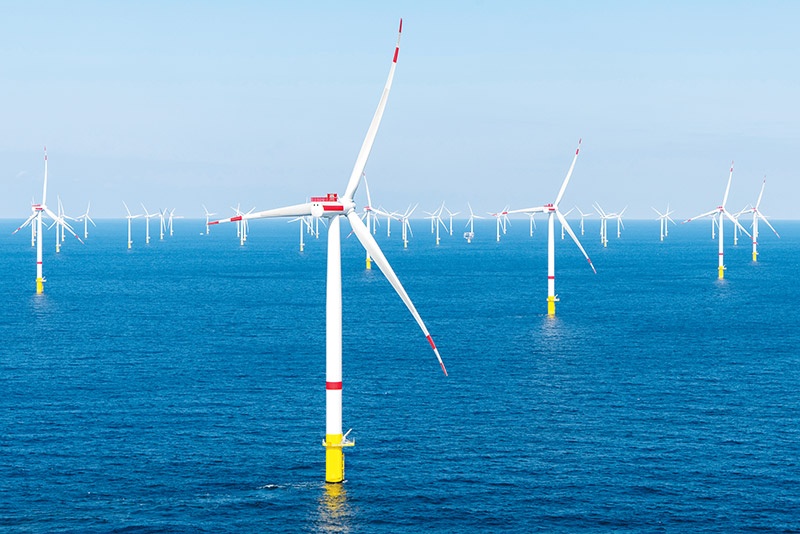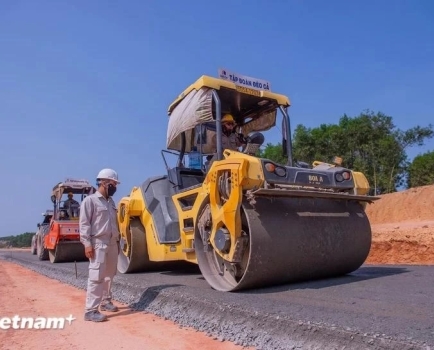Offshore wind future in balance for Vietnam
Sat, 27 Aug 2022 19:49:00 | Print | Email Share:
The long-awaited Power Development Plan VIII is set to target the development of about 7GW of offshore wind power in Vietnam. However, both investors and localities are waiting for a clearer roadmap.
Vietnam is attracting significant attention from the global offshore wind industry, following the hugely successful development of the market in Asia such as in Taiwan, Japan, and South Korea.
“Offshore wind power is at the beginning of a boom,” said Nguyen Thanh Huyen from the Vietnam Administration of Seas and Islands under the Ministry of Natural Resources and Environment.
He added that the number of businesses applying for permits to survey the sea to offshore wind power development is increasing. “Previously, there were only three enterprises applying for permits. In the past year and a half, there have been 35 units applying for marine survey permits at 41 measurement locations,” Huyen shared
In Vietnam’s north, there are now 22 registered projects with a total capacity of 51.6GW. Meanwhile, in the centre and south, there are 74 offshore wind power projects registered with a total installed capacity of 104.6GW. Thus, the total installed capacity of offshore wind power registered in the Power Development Plan VIII (PDP8) is more than 156GW, many times higher than the target of 7GW by 2030.
Among these, an investor registers at full capacity an entire province or region, causing a loss of opportunities for other businesses. At many previous meetings, leaders of the Ministry of Industry and Trade (MoIT) and the government reaffirmed that it is difficult to satisfy all investors’ requests for additional planning.
| Offshore wind future in balance for Vietnam |
Interest overload
Bui Van Thinh, chairman of the Binh Thuan Wind Power Association, stressed the grid is one of the barriers to developing offshore wind power development in Vietnam.
“Vietnam’s electricity grid is currently overloaded with renewable energy. The country’s electricity grid is independent, not linked with regions like the EU or North America. Therefore, when offshore wind power projects are completed, the power grid is ready to transmit capacity that needs a huge investment,” Thinh said.
Stuart Livesay, general director of the La Gan wind power project, said, “The goal by 2030 is to have 7GW of offshore wind power, but how to deploy it and design the power purchase agreements is unclear. Without certain guarantees, it will be very difficult to implement.”
He suggested that the official documents of provincial People’s Committee proposing to include the offshore wind project in PDP8 should be considered as a component of the application for approval to carry out offshore wind surveys.
“The support of the provincial government shows the ability and commitment of investors after the consultation and evaluation period of local and central authorities,” Livesay suggested.
Similarly, Sebastian Hald Buhl, Orsted’s country director for Vietnam, also suggested that the people’s committees of provinces should be involved in the investor selection process. Among that, the approval letter for the project developer from those committees should be a pre-qualification criterion.
“Localities play the role of initial selection, and are very effective in avoiding overlapping of mining surveys in the same area,” he said.
The investor consortium of Orsted Group and locally-invested T&T Group is developing a portfolio of offshore wind power projects with a total capacity of more than 20GW, which is divided into several phases and different provinces of Vietnam.
Pham Nguyen Hung, deputy director of Electricity and Renewable Energy Authority under the MoIT, said that the most developed countries allocate resources to conduct surveys and organise biddings in the sea area for the project developers to conduct research and surveys. “This approach also needs to be studied for applicability in Vietnam,” Hung said.
Experiences from investors show that it takes 2-3 years for an offshore assessment. Afterwards comes the design, contractor selection, fabrication, and installation, all of which take about 4-5 years. Therefore, to achieve the goal of developing offshore wind projects by 2030, the necessary legal framework needs to be issued within the next year.
Nguyen Thi Thanh Binh, deputy general director of T&T Group, said at a June workshop on the roadmap to offshore wind power that the biggest challenge now is the unclear policy.
“Policy framework, construction roadmap, and pricing mechanism for offshore wind power projects have not been prepared yet and lack specific and clear instructions,” Binh said.
The fixed feed-in tariff expired in October 2021, and the MoIT is drafting and collecting opinions on a price bidding mechanism for renewable energy, including offshore wind power. Binh wondered if immediately applying bidding for offshore wind power projects may be risky for both investors and the development goals of the PDP8.
What’s next?
Meanwhile, Mark Hutchinson, a representative of the Global Wind Energy Council, said that no market in the world has mobilised 3GW of offshore wind power in the first phase through bidding.
In the draft PDP8, the goal is to develop 7GW of offshore wind power by 2030, 4GW in the north and 3GW in the south. The MoIT explained that the main reason is related to inter-domain transmission limitation.
“Strong investment in offshore wind power in the south will lead to capacity cuts, causing damage to investors due to limited transmission capacity. The north has a lower wind power factor but has advantages in transmission,” said Hutchinson.
According to energy experts, the connection point of an offshore wind power project is located as close to the onshore grid connection point as possible. However, this is not always possible, and the onshore cable length from the land to the onshore substation can be quite large.
To overcome this problem, experienced developers can consider investing in building and upgrading parts of the high voltage transmission system. This could enhance the regional grid transmission capacity, strengthen systems, reduce risks, and avoid power cuts.
Livesey, representing the La Gan project in Binh Thuan province, said that large-scale offshore wind projects can generate a significant amount of electricity with a higher availability rate than many forms of onshore renewable energy. Increasing offshore wind energy production and aiming to stimulate local and national economic development should be supported by grid upgrades and carefully considered early on. Specific strategic planning and appropriate funding are needed to enable greater energy support.
“We urgently need to do a pioneering pilot project from which we can draw lessons from experience and come up with criteria for selecting investors and the best investment mechanism for developing this new energy,” he said.
By: Vietnam Investment Review
Source: https://vir.com.vn/offshore-wind-future-in-balance-for-vietnam-95934.html
---------------------------------------------
Same category News :














